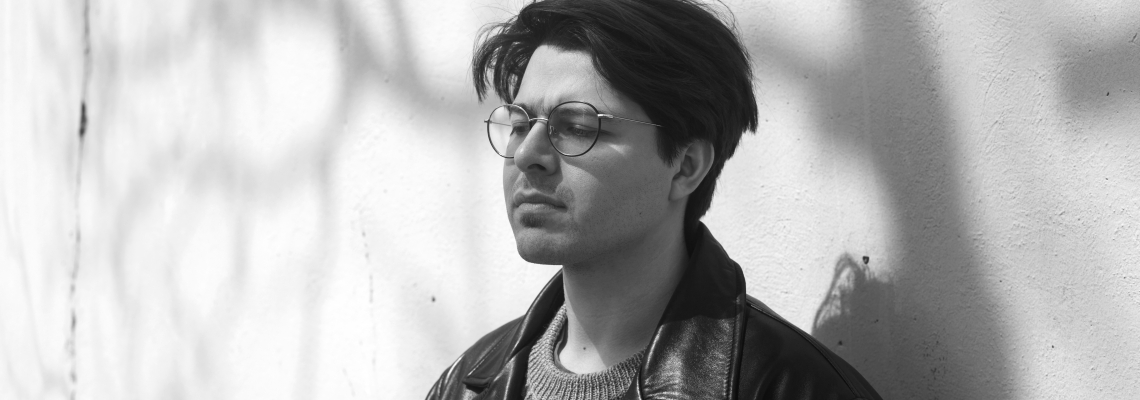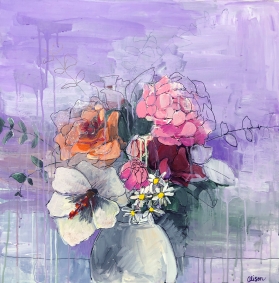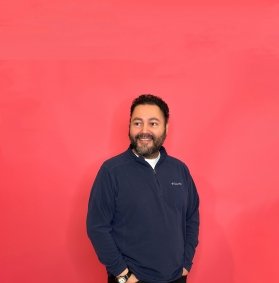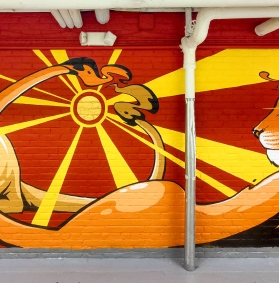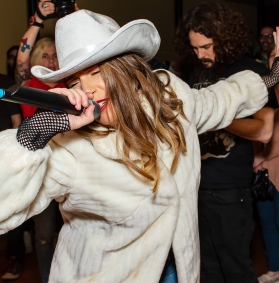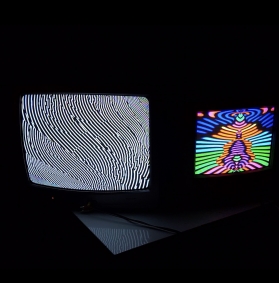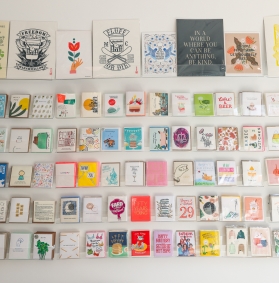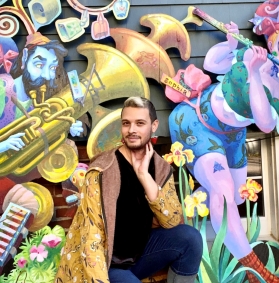Interview with Artist of the Month, Seth Garcia, as told to Andrea Read
What is the first book you remember loving as a child?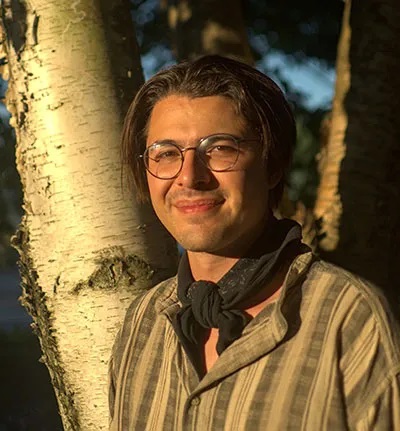
My mom always made a point to read to me and my brother when we were young, which I think was a huge catalyst for my love of literature. The first book I read on my own was 20,000 Leagues Under the Sea (the Stepping Stone version for young adults). I was astounded by the transportive qualities of literature. After that, I really transformed into a voracious reader. I read a lot as a child, but actually hated writing. I was too overwhelmed by possibility. Writing felt like a limiting of those infinite paths that each sentence could take, and I didn’t want to cause that kind of lessening on the world.
Who have been some of your most influential mentors as a writer?
The peers and teachers I’ve met both in undergrad and grad school have always pushed me to be my best. My mother, once she recovered from the initial shock of her son telling her he wanted to be a poet, has always been my biggest supporter. Shout out to moms!
Tell us about your writing process – what inspires you, how do you approach revision, etc?
It’s mostly blind rage and a near-constant crisis of faith. Jokes aside, my process is similar to the polishing of small stones in a tumbler. I roll certain lines and images over and over in my head, changing their contexts or refining them slightly until they feel accurate.
I struggle with articulating my thoughts in real time. I often process through speaking, which usually creates dissonance between my internal and external self. This stirs up a lot of anxiety for me, as a result. I enjoy poetry because my thoughts tend to develop simultaneously, not linearly. The parataxis of poetry allows for a more accurate and satisfying means of self-expression. Writing slowly, word by word, is where I find the most peace. I read an interview by Franz Wright in which he mentions writing creates for him a whole second life besides this one, and I very much relate to that. Writing helps me construct the most true facsimile of my internal
world, and provides me with the rare privilege to process my lived experience.
What are you currently reading?
I’m really loving Mothman Apologia by Robert Wood Lynn, Black Pastoral by Ariana Benson, The Passenger by Cormac McCarthy, Turn Up the Ocean by Tony Hoagland, The Silmarillion by J.R.R. Tolkien, The Art of Fiction by Kevin Prufer, and The Asking by Jane Hirshfield. I’ve been closely reading all the latest work Richard Siken has been putting out in the lit mag circuit, and am eagerly awaiting for his book to drop later this year.
What films, music, or art most inspire you these days?
My partner and I have been binging the films of Tarkovsky lately. I’m enamored with his style of metaphorical, non-linear storytelling. Also the new Dune movies are just a gorgeous testament to the power of singular vision and aesthetic.
I’ve been really inspired by the new records by Sufjan Stevens and James Blake. Natalia Lafourcade’s two volumes of Un Canto por México have been on repeat for me. I also recently discovered the music of The Roches, whose music is just so idiosyncratic and inspirational. The collaborative record Dilate Your Heart that Ross Gay made with various indie musicians is a huge inspiration for how poetry and music can come together. I’m particularly inspired by collaborative projects like that. SteppenDoom, a doom metal album Marc Urselli made with various indigenous throat singers has been a recent find that I treasure.
I’ve also been really inspired by the street art I have encountered while walking Somerville and Cambridge. There are a few series I really cherish seeing around in all the hidden little corners and edges of the city space. They really encourage the kind of deeper attention I am always trying to improve in myself.
You founded The Saintly Review at Emmanuel College and served as poetry editor for Blue Mesa Review at U of New Mexico. How has your experience as an editor influenced your own poetry?
It really hammered in the importance of ensuring a poem is complete. Seeing firsthand the kind of rigorous process that work goes through ingrained in me the need to edit my work until it shines. My stints as an editor especially taught me the value of mystery and surprise in a poem. After reading through countless submissions in the slush pile, a poem with the ability to wake me out of my daze was something I came to appreciate.
How did you make your way to Somerville? What are some of the things you love about the Somerville community?
When I was going to school in Boston for my bachelor's, Somerville always seemed to be the epicenter of the culture and arts that interested me, whether it was food, music, or writing. Somerville does an impressive amount of work supporting artists and providing them the opportunity for exposure and interaction with the general public. After grad school, I decided to move to Somerville and try my hand at integrating into its vibrant art community. I miraculously secured a lease, and have been here since. I always seem to find something new to admire about the community and culture here.
What do you like to do when you’re not writing?
I love meditating, playing pinball (shot out to Pop’s Pinball Parlor!), hiking, playing music, visiting museums, and attending concerts.
Lately, I’ve been trying very intentionally to embody slowness and silence in my daily life. Not doing is actually pretty difficult! I’ve been putting quite a bit of effort into just listening and removing the kind of clunky noise that modern life surrounds us with.
Do you memorize poems? What are some of the poems you return to again and again, and why?
I do! I don’t often have the attention span to memorize too many poems in their entirety, but I certainly have my mental rolodex of lines. I am trying to amass a small memory-library of haiku as well.
Some poems I keep close to heart are “Meditation at Lagunitas” by Robert Hass, “On a Day, In the World” by Brenda Hillman, “Aubade” by Louise Glück, “Louisiana Purchase” by Charlie Smith, “Wish” by W.S. Merwin, “Late Shift” by Tim Seibles, “Barking” by Jim Harrison, “What It Sounds Like” by Forrest Gander, “Holly Says Sobriety Is Paying Attention” by Susan Landers, “Wheel of Fire, The Mojave” by Campbell McGrath, “When I Am Among the Trees” by Mary Oliver, and Issa’s dewdrop haiku. There are so many more but I’ll stop myself there. I am a confessional poet, and am such a sucker for that one deeply personal line in a poem that really explodes outwardly into universal experience. Lines that feel as if I have known them my whole life, like experiences or memories I have always held but never put into words, are what enamor me to certain poems.
I have also been increasingly interested in visual and asemic modes of poetry these past few years. Aram Saroyan, Diana Khoi Nguyen, Darren Donate, Susan Howe, Jaap Blonk, Anne Carson, and Douglas Kearney have all made very inspiring visual work that I return to often.
What most concerns you these days? What are you most passionate about?
Self-honesty has recently been a major concern of mine lately. I’m in recovery, and am trying through that difficult and complex process to reckon with many elements of the self. I feel as though quality writing requires the same practice of facing hard truths. As a confessional poet, it’s very difficult to write without self-honesty. The dissolution of the ego into something bigger than oneself is an idea that gets talked about at so many of my group meetings and is very similar to the letting go necessary for a poem to flourish. I find that poems tend to write themselves when I actually listen to them, provide them space to develop without forcing my
expectations or intentions upon them.
Photo of Seth García
by Andrew Dion
